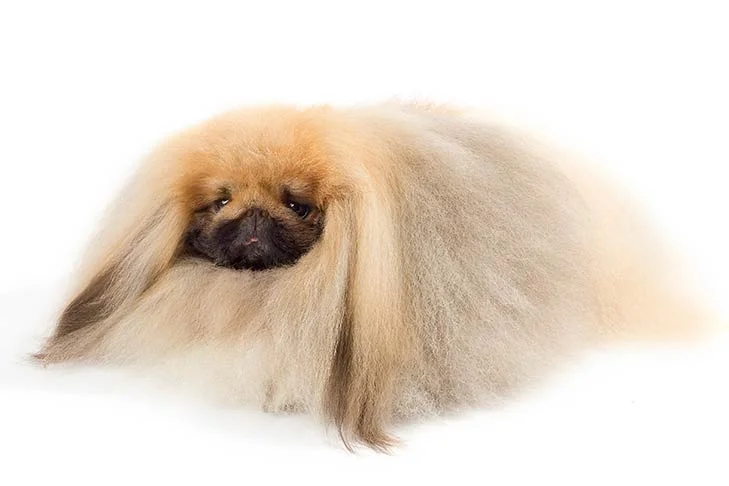The Pekingese is one of several breeds developed for the ruling classes of ancient China. It is a small toy companion with regal air and a characteristic rolling gait. These are intelligent dogs with unwavering loyalty and a variety of subtle pleasures. Small, stocky Pekingese toy dogs can weigh up to 14 pounds. Coats range in a variety of reds, from golden-red to deeper colors, and are longest over the neck and shoulders, giving Pekes their renowned “lion’s mane.” The eyes are big, black, and glittering, and the massive, short-muzzled head is an “envelope-shaped” rectangle that is broader than long. Pekes are distinguished by their fluid ‘rolling’ gait. Pekes form strong bonds with their favorite humans and are endearing, self-assured companions.
They were raised in palaces and had the same peaceful independence as the emperors who formerly possessed them. Ever vigilant, they make good watchdogs (Peke people claim they are “opinionated”). Pekes will put up with children but not excessive roughhousing






 Health
Health Grooming
Grooming Exercise
Exercise Training
Training Nutrition
Nutrition